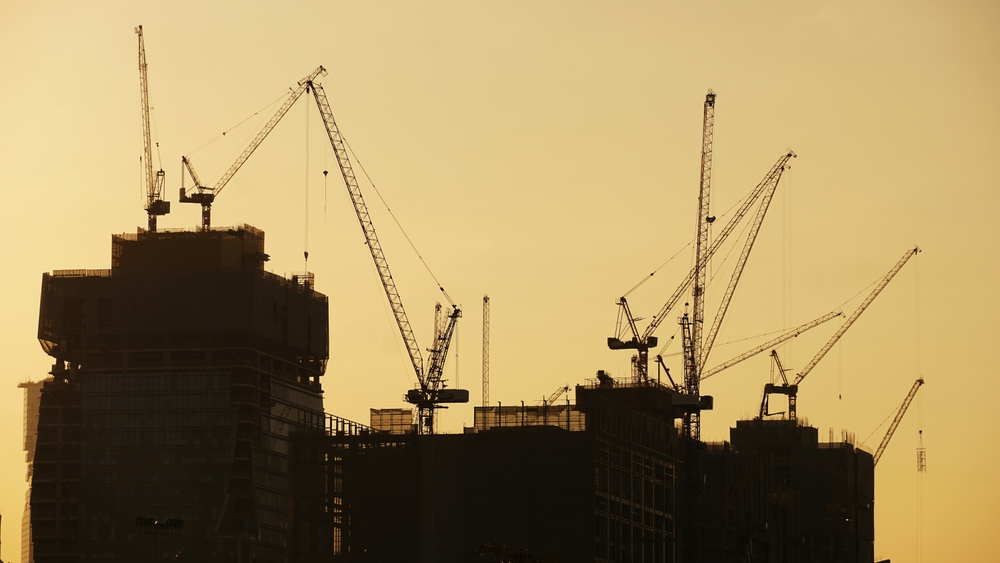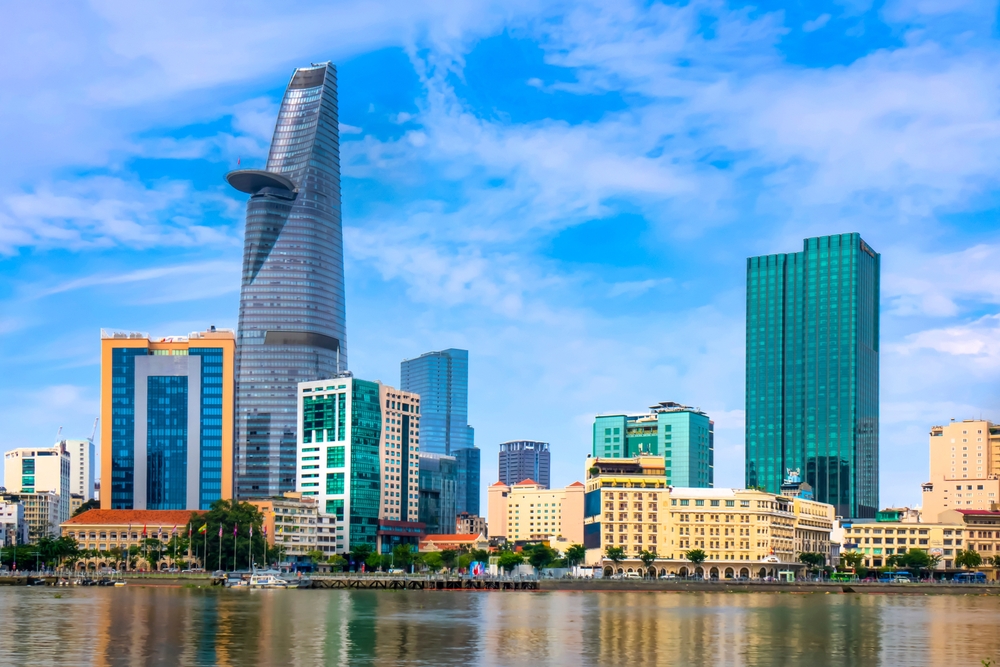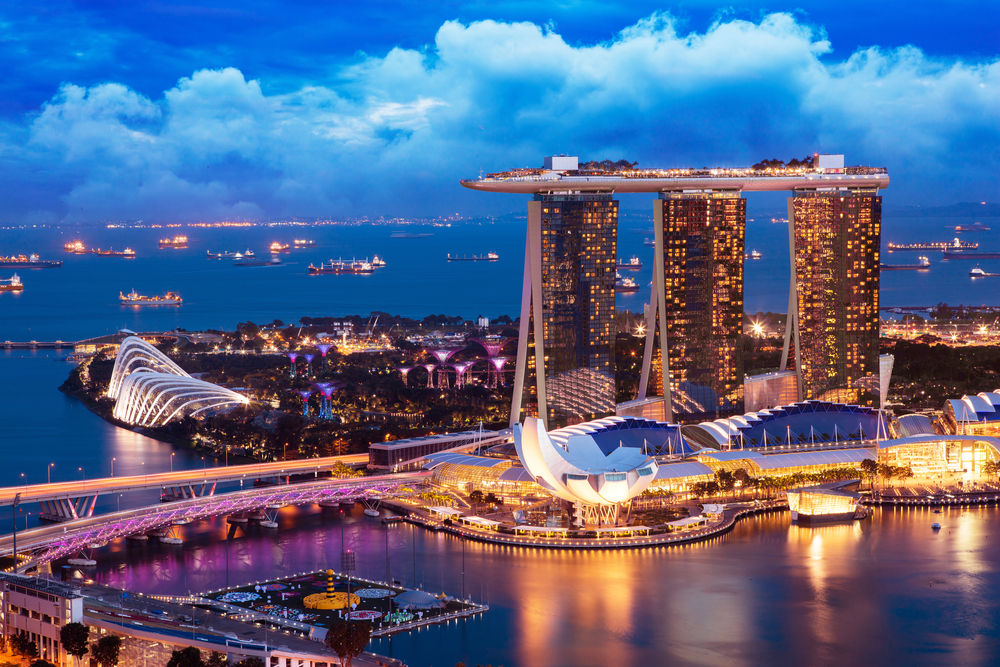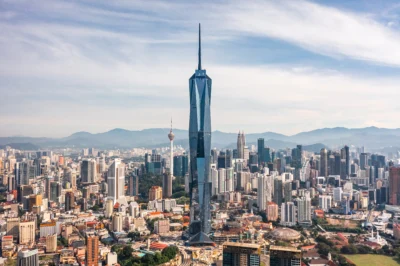Where Asian real estate stands in a fragmented, warmer world
Asia’s real estate industry faces many and varied challenges as a precarious geopolitical and economic situation and looming climate change threat continue to bite

Now may be the most dangerous time the world has seen in decades.
That was the view of JP Morgan Chase CEO Jamie Dimon who delivered his chilling thesis during an address made in October, a fittingly pessimistic coda to a year of uncertainty and conflict.
Bloody carnage in the Middle East, in addition to the grinding Russia-Ukraine conflict, would have “far-reaching impacts on global trade and geopolitical relationships,” he warned.
The summer of 2023 was also widely cited as the hottest on record, with the entire year on track to be an all-timer as well.
If the science as it is currently being showcased is accurate, the planet is struggling to limit the temperature increase to 1.5°C above pre-industrial levels as per the Paris Agreement.
Caught between manmade and climate strife, will the way forward for real estate be pitched down a dark path? Or will the road to a brighter future rise before us all?
A slow global economy
There are no easy answers. Shaped by the commodity price shock and rising energy prices, inflation was the watchword for the industry in 2022—an economic slowdown has since gripped the globe.
The International Monetary Fund (IMF) is projecting global growth to slow to 2.9 percent in 2024.
Part of the slowdown may be attributed to the monetary policies necessary to bring inflation down, according to Pierre-Olivier Gourinchas, economic counsellor at the IMF.
“Tighter credit conditions are weighing on housing markets, investment, and activity, more so in countries with a higher share of adjustable-rate mortgages or where households are less willing, or able, to dip into their savings,” he says.
Real estate pundits had hoped for a palpable turnaround earlier, on the assumption that inflation and interest rates would reach their peak.
And they would be right—global inflation is predicted to descend to 5.8 percent in 2024, down from a crippling 8.7 percent in 2022, according to the IMF.
Disinflation may well be happening, with nearly three-quarters of economies around the world expected to see lower headline inflation by the end of 2023.
The pace is not even among advanced and low-income economies. Inflation might be affecting development risk, but developers in countries like Singapore enjoy the policies and resources to mitigate its impact on construction costs and manpower shortages.
“Some have passed on the costs to consumers. Others have been more measured when they place bids for new land purchase,” says Christine Sun, senior vice-president of research and analytics at the consultancy OrangeTee & Tie.
Inflation is not expected to return to target until 2025 in most cases, says the IMF. In low-income countries, inflation is on average projected to be in the double-digits and not expected to fall until 2024.
Several markets have paused rate hikes as of H1 2023, with some, like Vietnam, cutting rates altogether to revive a stuttering economy. Still, the elevated interest-rate environment is widely expected to persist into the foreseeable future.
While the industry still clings to the theory of real estate as a hedge against inflation, the lasting impact of higher interest rates is “a tougher judgement call,” according to PwC in a joint report with the Urban Land Institute.
Interest rate movement will at least impact the residential resale market. “If interest rates start to moderate [in 2024], some buyers may enter the market,” predicts Sun.
Housing unaffordability continues
The ensuing deterioration in debt availability and rise of borrowing costs have not been hindrances to a surge in property prices though.
Previously predicted to fall dramatically at the start of 2023, average home prices in major markets worldwide, including India and Australia, are expected to rise in 2024, according to a recent poll of property analysts by Reuters.
Also, fixed-rate mortgages have shielded existing homeowners from the impact of higher interest rates while first-time home buyers have been kept away from the property ladder.
“The reality is, you’ve got very low supply and house building volumes in most markets because of Covid disruption and supply chain disruption,” states Liam Bailey, head of research at Knight Frank. “The fundamental point is strong demand meets weak supply.”
The prices have climbed to an extent that some markets have resorted to very drastic cooling measures. In April, Singapore slapped a staggering 60-percent additional buyer’s stamp duty (ABSD) on foreign buyers.
This has had a “material impact on the market,” according to Kristin Thorsteins, head of partnership growth for APAC at IWG PLC. “None of us expected the mother of all cooling measures,” she says. “Nonetheless, I still maintain that Singapore real estate players find themselves in an enviable position.”
“We saw a significant fall in foreign buying ever since the ABSD has been increased,” adds Sun. “Foreign buying trend was returning to almost pre-pandemic levels prior to the increase.”
While higher mortgage rates took a toll on housing affordability, Japan chose to retain its loose monetary policy. This has had the effect of maintaining its appeal to real estate investors, despite core inflation remaining high.
Of carbon taxes and sustainable designs
Last year scaled new heights in other ways. Singapore experienced its highest temperature on record in October: a possible foreshadowing of what the world will experience if global warming is allowed to breach 2°C.
The property sector—which drives around 39 percent of global emissions—plays a key role more than ever in slowing down and potentially reversing global warming through various mitigation efforts. “In any case, if we don’t get behind this by ourselves, we can expect the gahmen to step in as it so frequently does to regulate our industry,” says Thorsteins.
And it has stepped in. Singapore levies a carbon tax on property owners at SGD5 a tonne, rising to SGD25 and SGD45 a tonne over time. Singapore is now one of more than 70 nations with carbon taxes or emissions trading systems (ETS) that capitalise on greenhouse gas reductions.
In 2022, that number was just 68; in 2023, Indonesia threw its hat into the proverbial ring with the launch of its own mandatory ETS.
Companies themselves are also taking the initiative. More than 250 companies in Japan have declared to CDP, formerly the Carbon Disclosure Project, that they use internal carbon pricing, which puts a value on an organisation’s emissions.
Yet 88 percent of real estate companies do not report on their use of internal carbon pricing, making real estate the second-lowest user of the tool among sectors.
Fortunately for the world, sustainable design experienced a landmark year in 2023, with bioclimatic and biophilic design coming to the fore, as well as spatial planning and passive solar design. Architects are also taking kindly to recycled materials, bamboo, and wood in their designs.
Singapore, which has a Green Mark certification programme in place, as well as Malaysia will be “leading the charge” in the rise of sustainable design, predicts Thien Duong, general director of the design practice Group GSA Vietnam. “This is being driven by a growing awareness of the environmental impact of the construction industry, as well as by government regulations and incentives.”
Nevertheless, challenges persist. Sustainable materials and technologies often command a higher price tag compared to their conventional counterparts. A deficiency in skilled labour and expertise in sustainable design and construction compounds the dilemma.
“Government regulations and incentives for sustainable design may vary from country to country,” says Thien.
Where to live, work, play
With a mix of uses attractive to both residents and businesses, mixed-use developments will have greater currency in the future. Designed to adapt to the times, mixed-use projects often integrate public space into the premises, creating a sense of community and reducing the need for people to travel long distances to work, shop, and recreate—a complement to sustainability.
“Mixed-use development will become more common in Asia Pacific in the coming years, as it can help to reduce traffic congestion, create more livable communities, and promote social interaction,” says Thien.
“[But] balancing the needs of different users can be challenging. Designing buildings that are both functional and aesthetically pleasing can be difficult, and coordinating the construction and management of a mixed-use development can be complex.”
The office components of these projects, as well as their standalone counterparts, also fall prey to the weak expansionary appetite of occupiers now, a legacy of the pandemic.
The buck now stops with landlords, faced with the pressure to do upgrades related to ESG and energy efficiency. Proximity to transport hubs now come as standard to entice remote workers back to the office.

Such exodus to greenness and quality is expected to remain on trend as the office market continues to favour tenants. In fact, regional vacancy hit a 20-year high of 18% in the first half of 2023, according to CBRE.
Still, offices accounted for 43 percent of total investment in H1 2023, and completions equivalent to about 20 percent of Grade-A supply will come online over the next few years. The rebound for the office segment in Asia will be “slow and L-shaped,” the company further predicts.
The allure of remote work has been “unexpectedly resilient” in Asian cities where houses are too limited in size for work-from-home productivity, according to PwC. Office is clearly the “new retail,” the company reports, alluding to the disruption e-commerce has wrought on the brick-and-mortar scene over the years.
Logic in logistics
As people locked down at home during the pandemic, e-commerce shored up another segment of real estate: logistics. Fast-forward to 2023 and leasing demand from e-commerce platforms decelerated, with several players willing to outsource logistics operations to third parties (3PLs). Vacancy rose across the segment in 2023, with landlords dangling incentives en masse.
Around 68 percent of logistics occupiers plan to expand their warehouse portfolios in the next few years, but that number is down from 78 percent in 2021, according to a CBRE survey of Asia-Pacific logistics occupiers.
Macroeconomic uncertainties will play a major part in influencing overall market sentiment, which in turn impacts the demand and price trajectory for properties
Worldwide, the manufacturing sector is reckoning with the economic downturn, which reflects the post-pandemic shift in consumption back toward services. The swing of the pendulum props up service-oriented economies over industrial powerhouses such as China.
With that said, logistics has a bright path ahead independent of online shopping. Logistics and office yields in the Pacific expanded dramatically in 2023, with rental growth atoning for the fall in capital values, according to CBRE.
“The bigger game is the whole demand for urban logistics and light industrial space for all sorts of uses, not just e-commerce,” an investment manager tells PwC.

After the ABSD increase, demand has shifted to non-residential properties in Singapore, including logistics, according to OrangeTee & Tie. “There has been a noticeable increase in demand for strata-office spaces and industrial properties in recent months,” says Sun, adding that demand for commercial and industrial properties had been slower than that for residential properties during the pandemic.
In the end, industrial properties and other segments of real estate are at the mercy of the geoeconomics fragmentation that assailed the international community in 2023. The world could further splinter into blocs that trade exclusively with one another, reducing annual global GDP by up to seven percent, warns the IMF.
This picture of a divided world could spell insecurity for some time to come. “Macroeconomic uncertainties will play a major part in influencing overall market sentiment, which in turn impacts the demand and price trajectory for properties,” says Sun.
This article was originally published on asiarealestatesummit.com. Write to our editors at [email protected].
Recommended
6 reasons Bekasi is rising as Greater Jakarta’s next hotspot
One of Greater Jakarta’s rising stars is prospering, thanks to ample recreation and a contingent of desirable housing projects
6 developments driving Asia’s green real estate shift
Developers are being incentivised to push a green agenda into daring new realms
The Philippines’ LIMA Estate drives sustainable industrial growth
LIMA Estate models a citywide vision that uplifts workers while appealing to climate-conscious employers
Malaysia property market rebounds with foreign interest and growth
The nation’s property market is stirring to life, fuelled by foreign buyers and major infrastructure drives










